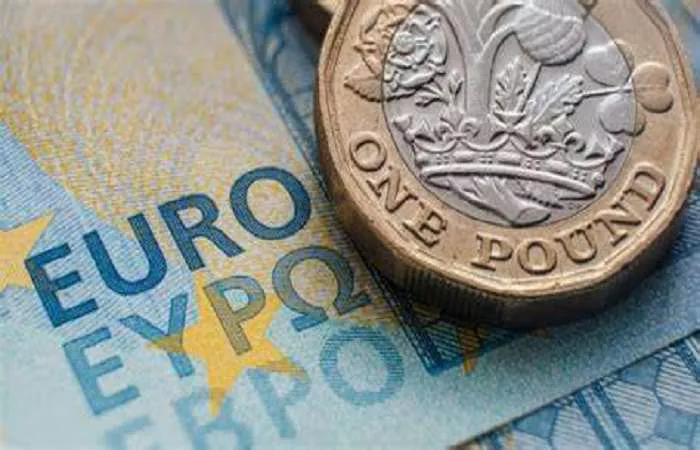In the complex and dynamic foreign exchange market, the exchange rate between the British pound (GBP) and the euro (EUR) is of significant importance. As two major currencies in Europe, their exchange rate fluctuations not only reflect the economic and political landscapes of the United Kingdom and the eurozone but also have far – reaching implications for global trade, investment, and financial markets. In recent times, the pound has witnessed a downward trend against the euro, and this article aims to delve into the underlying causes through a comprehensive analysis.
Macroeconomic Divergence: A Fundamental Factor
Weakening Economic Growth in the UK
Over the past few years, the UK economy has faced multiple headwinds, leading to a slowdown in economic growth. The uncertainty surrounding Brexit has had a lingering impact on business investment. Many companies have been hesitant to make long – term investment decisions due to the unclear future trading relationship between the UK and the EU. For example, according to official data, business investment in the UK has declined in several quarters following the Brexit referendum.
Moreover, the global economic slowdown, exacerbated by factors such as trade disputes and the COVID – 19 pandemic, has also taken a toll on the UK economy. The UK’s export – oriented sectors, such as manufacturing and services, have faced reduced demand from international markets. In contrast, some eurozone countries, like Germany and France, have managed to maintain relatively stable economic growth rates, supported by government stimulus measures and a more diversified export market.
Inflation Discrepancies
Inflation is another crucial economic indicator that affects the exchange rate between the pound and the euro. In the UK, inflation has shown an upward trend in some periods, driven by factors such as rising energy prices and supply chain disruptions. Higher inflation erodes the purchasing power of the pound, making British goods and services relatively more expensive in international markets.
On the other hand, the eurozone has managed to keep inflation in check through a combination of monetary policy measures and coordinated fiscal policies among member states. The European Central Bank (ECB) has been actively monitoring inflation levels and adjusting its monetary policy accordingly, which has helped to stabilize the value of the euro.
Contrasting Monetary Policies
Interest Rate Differentials
One of the most direct ways in which monetary policy affects the exchange rate is through interest rate differentials. The Bank of England (BoE) and the ECB have adopted different stances on interest rates in recent years. In an attempt to stimulate economic growth, the BoE has maintained relatively low interest rates. This has made holding pounds less attractive for foreign investors, as they can earn higher returns by investing in assets denominated in other currencies, such as the euro.
The ECB, on the other hand, has been more cautious about cutting interest rates. In some cases, it has even signaled a potential tightening of monetary policy in response to economic recovery in the eurozone. This has led to a situation where the yield on euro – denominated assets is relatively higher, attracting more foreign investment and strengthening the euro against the pound.
Quantitative Easing and Asset Purchases
Both the BoE and the ECB have implemented quantitative easing (QE) programs during the economic downturn. However, the scale and pace of these programs have differed. The BoE’s QE program, aimed at injecting liquidity into the UK economy, has increased the supply of pounds in the market. The increased supply, all else being equal, puts downward pressure on the value of the pound.
In contrast, the ECB’s QE program has been more calibrated, taking into account the economic conditions of different eurozone member states. This has helped to maintain a more stable value of the euro, further widening the gap between the two currencies.
Political Uncertainties
Brexit Aftermath
The UK’s departure from the EU, known as Brexit, has had a profound and long – lasting impact on the pound. The negotiation process was fraught with uncertainties, and even after the formal exit, the UK and the EU are still ironing out details of their future trading relationship. The lack of clarity has made businesses and investors hesitant to engage in long – term activities in the UK, leading to a flight of capital.
For instance, many financial institutions based in London have relocated some of their operations to other EU cities to ensure continued access to the single market. This has not only affected the UK’s financial services sector but has also weakened the demand for the pound.
Domestic Political Turmoil
In addition to Brexit, the UK has also faced domestic political turmoil in recent years. Frequent changes in government leadership and policy U – turns have created an unstable political environment. This political instability has undermined the confidence of both domestic and foreign investors in the UK economy, leading to a decline in the value of the pound.
Conclusion
The decline of the pound against the euro is the result of a complex interplay of multiple factors. Macroeconomic divergence, contrasting monetary policies, political uncertainties, trade imbalances, market sentiment, and global events have all contributed to this downward trend. As the economic and political landscapes of the UK and the eurozone continue to evolve, the exchange rate between the pound and the euro will remain highly volatile.For investors, businesses, and policymakers, it is essential to closely monitor these factors and their potential impacts. By understanding the underlying causes of the exchange rate fluctuations, stakeholders can make more informed decisions, manage risks more effectively, and adapt to the changing dynamics of the foreign exchange market.
Related topics:
- Current USD Exchange Rate: $4,000 US in Australian Dollars
- Current USD Exchange Rate: $110 US in Australian Dollars
- Current USD Exchange Rate: $39 USD in Australian Dollars


